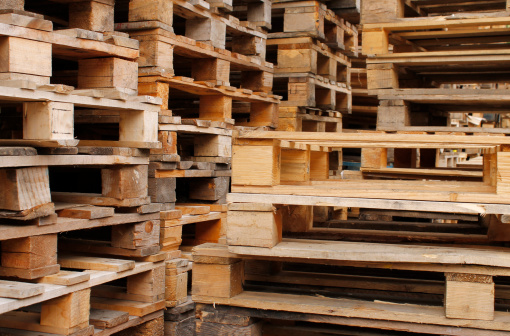Competition for lumber is a fact of life in the pallet business. Other industries use the same low-grade hardwoods and softwoods that are used in pallet production, and can afford to pay more. In a market of high demand and low supply, four industries in particular are competing for the low-grade hardwoods that pallet manufacturers need:
1. Railroads
The rail industry is experiencing significant growth. As demand for rail service grows, so does the need for maintenance and new construction. Expanding railroads need tracks, and tracks need rail ties made of wood – the same low-grade hardwoods that pallet manufacturers buy.
Railroad builders are able to pay a higher price for the same wood. As long as there is a demand for new tracks or a need to restore old ones, businesses that manufacture rail ties will put pressure on the hardwood lumber supply.
2. Oil and Natural Gas
The oil and gas industries in North America are booming, and building pipelines to take their products out of the North American interior to coastal ports. This infrastructure boom is generating demand for crane mats and construction mats to support heavy equipment. Just like railway companies, the makers of these mats can afford to pay more for the same lumber that pallet-makers use.
3. Flooring
Wood flooring is popular. While this doesn’t normally affect the pallet industry, some flooring manufacturers are starting to buy up low-grade lumber because worn, rustic wood floors with defects and knots are very trendy. Sometimes they’re even using old pallets to create this flooring! If residential construction or renovations increase, the flooring industry will respond by purchasing even more of the same lumber that pallet manufacturers need.
4. Pulp Mills
Paper manufacturers buy wood to process into pulp for making paper, and the pulp mills are willing to offer a premium for hardwood. Of course, those mills also target the same lumber that pallet manufacturers use. If demand for paper and paper products remains high, mills will continue buying lumber and paying a higher price.
Overall, this increase in competition for lumber combined with the short supply by sawmills is driving up prices. This competition is likely to be ongoing, and will keep pressure on pallet manufacturers – who may have no choice but to pay more for their boards and pass along the cost to customers.





